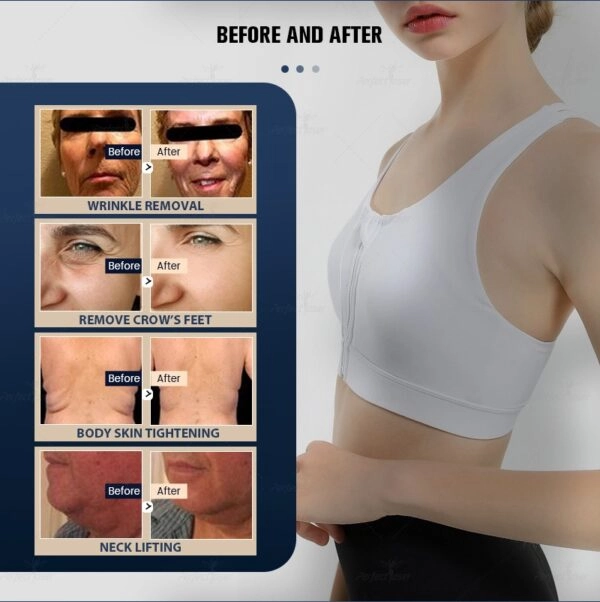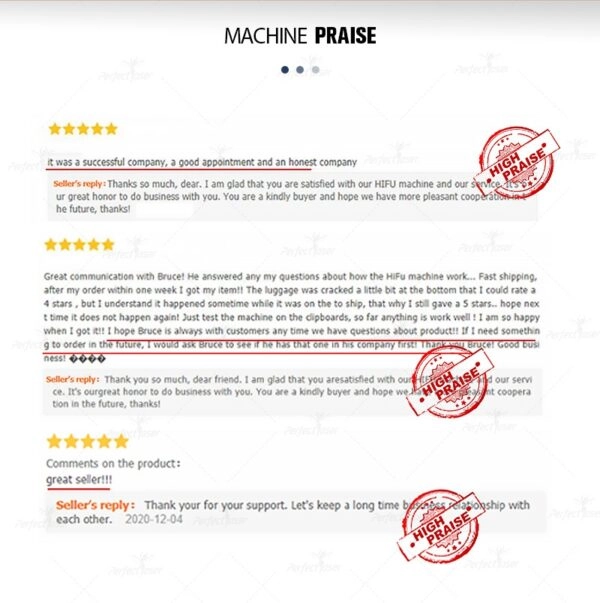
If you’ve started to notice your jawline softening or the skin under your chin not snapping back like it used to, you’re not alone. That’s usually how mild skin laxity shows up. And for a lot of people, going under the knife just feels too much.
That’s where non-invasive treatments like High-Intensity Focused Ultrasound (HIFU) come in.
So is HIFU worth it? Especially when your skin’s only just starting to sag? Let’s take a closer look — real results, how it works, and what kind of downtime you can expect (spoiler: almost none).
What Is HIFU and How Does It Work?
HIFU stands for High-Intensity Focused Ultrasound, a mouthful that basically means using sound waves to heat up specific layers of your skin — the ones you can’t reach with creams.
When that deeper layer warms up, your body freaks out a little (in a good way) and starts rebuilding collagen. That’s the protein that keeps everything tight and springy.
It’s not new science; ultrasound’s been used in medicine for decades. But beauty tech turned it into a way to lift skin without breaking it. The best part? HIFU works under the surface, so the outer layer looks untouched — no peeling, no scabbing, no weird shine.
Why people love HIFU for mild laxity
- Great for tightening early sagging on cheeks or jawline
- Subtle lift, no “pulled” look
- No recovery time — you could do it on a lunch break
- Collagen keeps improving for months after
One study published in 2024 found that people with mild facial laxity saw measurable lift within about 12 weeks. That checks out with what most clinics say too.
Who Is the Ideal Candidate for HIFU?
HIFU isn’t for everyone. If you have open wounds, severe acne, or metal implants near the treatment zone, skip it.
But if you’re in your 30s to 50s and you’re just starting to see that “gravity look,” you’re right in the sweet spot.
People who get the best results usually have realistic expectations — they’re not chasing a facelift, they just want that firmer, more “awake” version of their face back.
Before Your HIFU Session
There’s not much prep, which is half the appeal. Most practitioners just ask you to come with clean skin — no makeup, no heavy creams.
Try not to pop ibuprofen or anti-inflammatories before treatment; you actually want your skin’s natural healing response to do its thing afterward.
Drink water, stay out of the sun, and that’s pretty much it.
What Happens During the Procedure
It’s not as intimidating as it sounds. You’ll lie down, they’ll spread a cool gel, and a small handheld device moves slowly across your face. You’ll feel little zaps of warmth or tingling — not painful, but definitely noticeable.
Sessions take anywhere from 30 minutes to an hour and a half, depending on how many areas you treat. No anesthesia, no bandages.
Some clients even check their phone while the treatment’s happening — though most end up just zoning out to the hum of the machine.
HIFU Before and After Results
Right After the Session
You might see a light tightening right away. It’s subtle — your face won’t suddenly jump ten years back — but you can feel the firmness, especially along the lower cheeks.
A Few Weeks Later
Around the 8- to 12-week mark, the big changes start showing up.
People usually notice that fine lines soften and the jawline looks sharper. Makeup sits better, and the skin just feels denser, like it’s holding itself up again.
Before-and-after photos often highlight the corners of the mouth or under-eye area — two spots where laxity first appears.
Recovery and Downtime
Almost none, really. That’s one of the main reasons people say HIFU traitement is worth it. You can walk right out, grab coffee, go back to work.
Your skin might look a bit flushed for a few hours or feel slightly tender to touch — but that’s about it.
Aftercare tips from the pros
- Don’t hit the sauna or gym for 48 hours
- Keep your face hydrated (a hyaluronic serum works great)
- Always use sunscreen — HIFU or not
If you’ve ever done chemical peels or microneedling, this recovery will feel like a vacation.
How Long Do HIFU Results Last?
Results last differently for everyone. Some people get about 6 months; others, over a year.
It depends on your age, lifestyle, and how fast your body breaks down collagen.
Most clinics recommend a touch-up once a year. Think of it like maintenance — the way you’d service a car or color your hair. Small, regular care beats big, expensive fixes later.

HIFU Cost: What to Expect
Let’s be honest — HIFU isn’t cheap, but it’s nowhere near surgical money.
Prices range widely, but here’s a rough idea:
- Small areas (eyes or jawline): around $400–$800
- Full face: $1,000–$2,500
Yes, that’s more than a facial, but you’re paying for tech that works below the skin, not just on top of it.
Risks and Side Effects
Every skin treatment has some, but HIFU beauty machine is pretty mild.
A little redness, maybe tenderness for a day or two. Occasionally, someone gets slight numbness or tingling — it goes away on its own.
No peeling, no marks, no “downtime makeup” needed.
The only real risk is doing it with the wrong machine or untrained technician. Always check that the device is FDA- or CE-approved — it’s worth asking.
HIFU vs. Other Tightening Treatments
| Traitement | Type | Temps d'arrêt | Meilleur pour | Typical Duration |
| HIFU | Ultrasound | Minimal | Mild–Moderate laxity | 12–18 mo |
| RF (Radio Frequency) | Heat-based | Faible | Texture & tone | 6–9 mo |
| Microneedling RF | Micro-injury + heat | 1–2 days | Texture + pores | 6–12 mo |
| Laser Lift | Light-based | 3–7 days | Pigment + mild lift | 9–12 mo |
| Surgical Facelift | Invasif | Weeks | Severe sagging | 5–10 yrs |
If you’re in your 30s or early 40s, HIFU hits the sweet spot — real lift without the “too much” look or recovery time.
For Clinics: Why Good HIFU Machines Matter
If you run a med-spa or clinic, you probably already know: the machine makes all the difference. A stable device with consistent energy output means happy clients — and happy clients come back.
Energy depth and temperature control are key. The top systems can target at 1.5 mm, 3 mm, and 4.5 mm — that’s how you reach the SMAS layer (the one surgeons lift during facelifts).
Cheap units often don’t hit the same depth or power evenly. That’s why professionals look for medical-grade HIFU systems — it’s an investment, but it pays off.
Conclusion: Is HIFU Worth It for Mild Skin Laxity?
For mild sagging or early wrinkles, absolutely.
HIFU gives subtle, real lift — not a frozen face, not a drastic change. It’s one of those treatments people around you notice, but can’t quite tell what’s different.
And if you’re a clinic owner or technician, offering HIFU with the right equipment can be a solid business move. It’s fast, high-margin, and people come back for yearly maintenance.

Explore HIFU Machines from Perfectlaser
Perfectlaser develops medical-grade HIFU systems built for professionals who care about both results and reliability.
5-in-1 Multifunctional HIFU Machine
- Facial lifting & contour tightening
- Body firming & cellulite smoothing
- Vaginal rejuvenation & RF microneedling
- 15.6-inch HD touchscreen for precise control
Each unit is built under ISO certification, backed by training and lifetime support. If you’ve been thinking of adding HIFU to your clinic menu, this is the kind of system that pays itself off faster than most expect.
Ask for a live demo or product sheet today.
Sometimes seeing the results in real time is the only proof you need.
FAQ (questions fréquentes)
Q: Is HIFU really worth it for mild skin laxity?
A: Yes — especially if your skin still has some bounce left. HIFU treatment helps tighten the foundation layer, giving a natural lift that lasts months without surgery.
Question : How long do HIFU results actually last?
A: Most people see visible HIFU results for about a year. If you take care of your skin and avoid smoking or too much sun, it can stretch closer to 18 months.
Question : What kind of downtime does HIFU treatment have?
A: Pretty much zero. A bit of pinkness for a few hours, but you can wear makeup the same day and even go to dinner right after.

